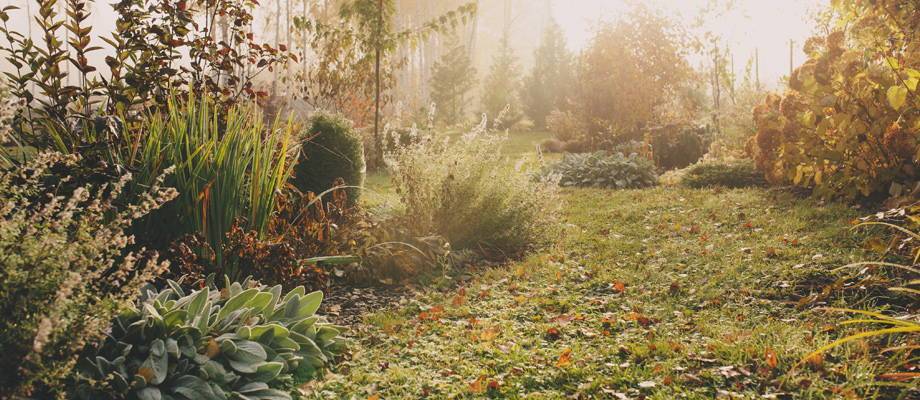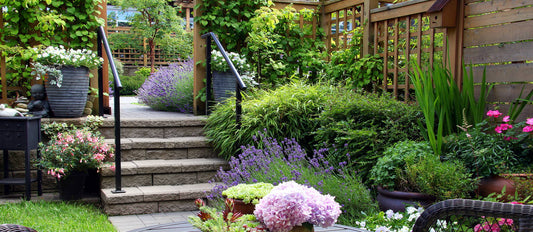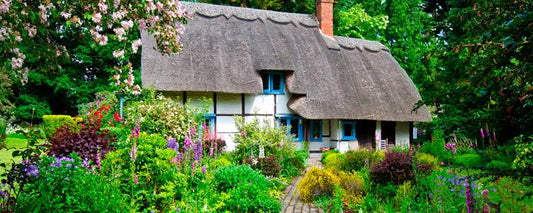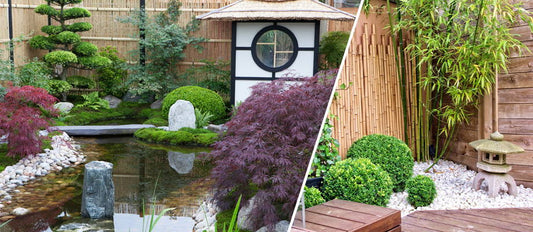As the weather outside gets colder, you tend to spend more time inside. However, now's the time to get your garden, patio, (roof) terrace or balcony ready for winter Think of all the plants and creatures that can live in your garden. Of course it is also important to prepare your pond for freezing temperatures. With Bakker's winter checklist, you can make sure that you've made all the necessary preparations before the really cold weather sets in.
1. The last planting time before winter
Autumn is an important time to get in the garden and get closer to nature. Now is the best time to plant certain plants, such as roses, fruit trees and shrubs. You will also want to have many trees in the ground before frost. The roots and trunks will then be able to strengthen before winter begins. In the spring you will be happy with fantastic results. The flowers will bloom even stronger and longer and the plants will grow faster. Spring-flowering bulbs must also be planted before the first frost. Tulips, daffodils, hyacinths etc. are all spring bloomers. Combine your favourites for a colourful border in spring.
2. Pruning
Pruning is done all year round and so also in autumn. Some plants need to be pruned before winter, otherwise the plant may die from the freezing cold. It is important to prune roses, (fruit) shrubs and trees. Be sure that you read how much to cut back the plants on Bakker's website. Some shrubs are cut back to the ground, whereas other shrubs keep their branches. When flowering plants are planted, make sure that the spent flowers are cut away.
3. Protecting plants against frost
Many garden plants and flower bulbs are not winter hardy. This means they need protection during freezing periods. Give plants that are not able to withstand frost a winter coat in the form of protective covers. Potted plants can be protected with bubble wrap. You can also put these flower pots inside where it's nice and warm. That way you can enjoy your plants for a long time. Perennials planted in the open ground or border are difficult to protect with bubble wrap or a protective cover. For these plants, use compost or a mixture of manure and peat.
4. Additional watering and repotting
Water newly planted plants, hedges and conifers before it freezes. This ensures that they have enough water and will not freeze solid. Plants that require extra space can be repotted now. All shrubs and perennials can now be replanted in a different place. Replanting trees is not advisable. The trunk will have a hard time rooting in a new spot and so the tree's chance of survival will be slight. Always give extra water after planting. Replanting requires considerable effort on the part of shrubs and perennials. Do you have a garden with grass? Give the roots of the grass extra oxygen by poking holes in it. That way it grows better in spring.
5. Tidying up outside
No one wants weeds in the garden. They don't look good and weeding is never an easy task. That is why it is best to do it before winter arrives. That way you don't have to weed as much in the spring. You can use fallen leaves in various ways. First of all, you can leave them as an insulating mulch layer for frost-sensitive plants. Another possibility is to make compost from the leaves. Or make beautiful decorations for your home, such as an autumn wreath or an autumn pole. So don't throw away the leaves - use them!
6. Water taps and ponds
The pond always needs a lot of attention. Preparing for winter is not difficult if you keep up with maintenance. Remove loose leaves from the pond and cut back all plants around the pond. This prevents leaves from rotting in the water. In order to avoid leaves falling into the pond, place a net over the pond during the autumn. Do you have fish in your pond? If so, make sure that a section of the pond is always free of ice. This ensures that fish can get enough oxygen. Do you want to know in detail how to prepare your pond for winter? Then check out Bakker's pond checklist for winter.
Don't forget to shut off any outside taps to prevent frozen or burst pipes. Water in pipes expands as it freezes, which can cause pipes to burst.
Winter creatures
Creatures in the garden give a lovely feeling and help make your garden a paradise. In winter you want to give them a home. Don't do this by bringing them indoors, but do give them a little home outside. For example, hang a bird house in the tree or place an insect hotel on an outdoor table. Leave something tasty for birds and squirrels such as suet or nuts.




